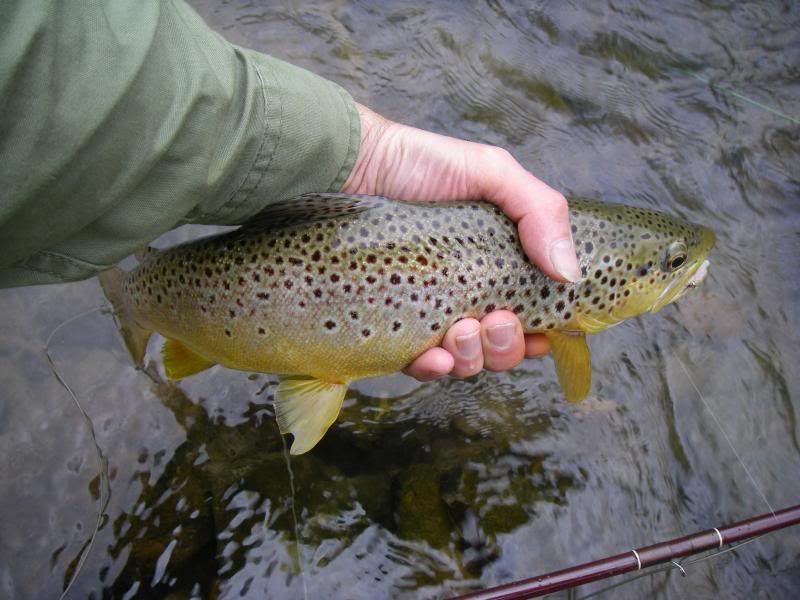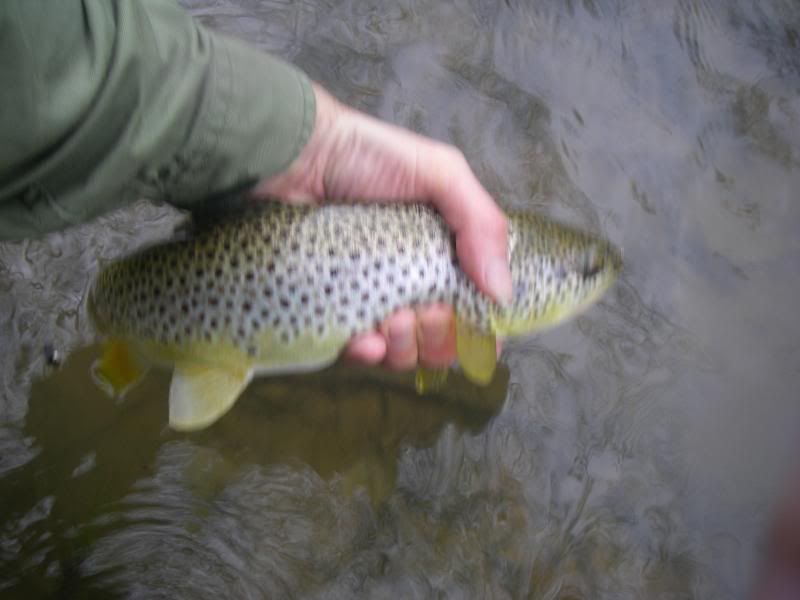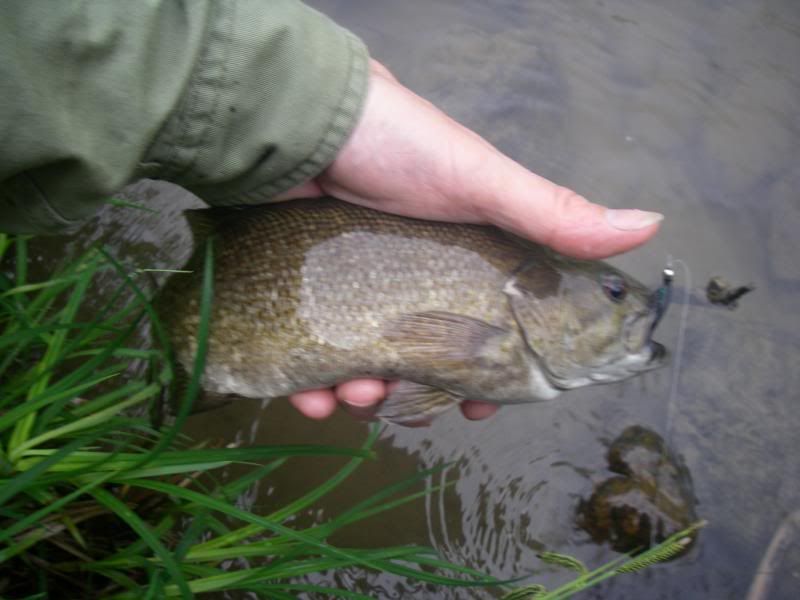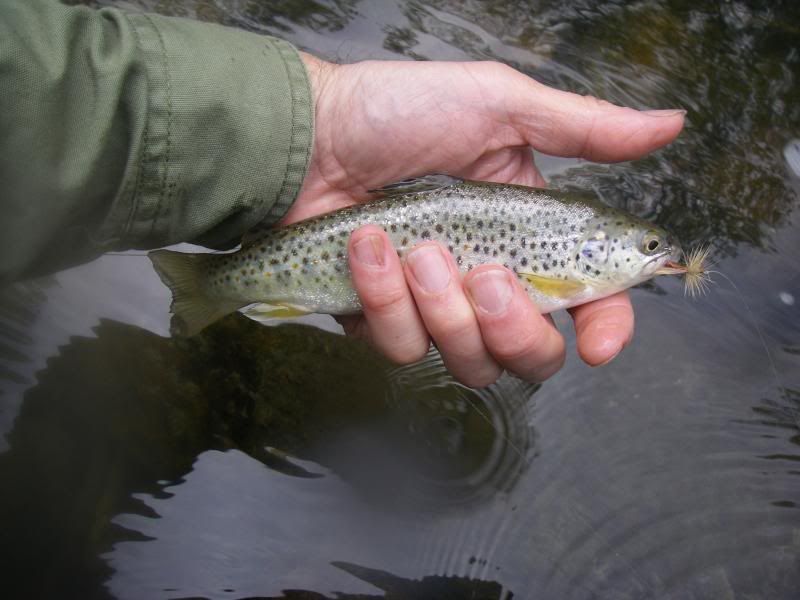B
barbless
Member
- Joined
- Jun 28, 2008
- Messages
- 483
This has been one of my biggest problems, ever since I've been fly fishing. At last, it appears that I'm on the way to solving it.
I don't think anyone hooks all of the fish that take their lures on fly tackle- but I've had outings over the past few years when I was 0 for 6, or 1 for 8, or so. That isn't fish lost after a fight, it's fish that took my fly but were never really on in the first place.
This year I'm doing much better, so far.
This is what I think has made the difference:
1) I pay much more attention to stripping the excess slack out of my line. It's necessary to leave a little bit of slack in any upstream drift, of course, or else the line is pulling and dragging the fly. But it's also important to remove the large slack loops and coils of line that start to pile up, feeding as much back through the guides as possible.
And the crucial part of doing that is to always hook your rod hand index finger under your line at the handle, once you've made your cast! That's your real stripping guide, so to speak. Always pull the line past your index finger as you strip it in.
This is so elementary, I'm surprised that it doesn't get addressed more in the "how-to" books. Maybe they think that it's so basic that it goes without saying. But some of us are slow. The first book I've read that emphasizes the importance of feeding line past the index finger is Eric Stroup's Common-Sense Fly Fishing. (I highly recommend that book; the content is exactly what the title advertises.)
2) When you see or feel the take, don't jerk- pull! The motion of your arm should NOT feel like a startle reflex. If you're doing that, it's likely that you're yanking the fly out of the mouth of the fish. If you're like me, that yanking motion started at the shoulder, along with a sharp snap of the elbow...and, congratulations, you've just pulled your fly something like three feet from the mouth of the fish. No bueno.
What you want to do instead is just a little more casual. Keep all of the action at the elbow. For me, it's like the motion of my arm when I flip a coin- my forearm rises up maybe a foot or so in the process. Not super fast, like a mousetrap snapping shut- just a little slower and smoother. The key is to react just as fast to the take, but not so forcefully. Once the fish is on the line, the line tension will set the hook deeper on its own.
3) Keep your hooks sharp. Get a hook file and use it with every new fly, and after every snag and every fish released. It also helps to bend the hook point slightly to one side, particularly with flies #16 and smaller.
The first two points- about the preparation and the act of hooking- are the more important ones. A sharp hook won't grab a fish by itself...well, actually it will, otherwise I would have caught next to nothing in previous years. A few fish did manage to hook themselves, despite everything I did to impede the process. But not very often.
Like I said, now that I'm applying these principles I've been doing much better at hooking fish.
Newbies, this too could be you:





I don't think anyone hooks all of the fish that take their lures on fly tackle- but I've had outings over the past few years when I was 0 for 6, or 1 for 8, or so. That isn't fish lost after a fight, it's fish that took my fly but were never really on in the first place.
This year I'm doing much better, so far.
This is what I think has made the difference:
1) I pay much more attention to stripping the excess slack out of my line. It's necessary to leave a little bit of slack in any upstream drift, of course, or else the line is pulling and dragging the fly. But it's also important to remove the large slack loops and coils of line that start to pile up, feeding as much back through the guides as possible.
And the crucial part of doing that is to always hook your rod hand index finger under your line at the handle, once you've made your cast! That's your real stripping guide, so to speak. Always pull the line past your index finger as you strip it in.
This is so elementary, I'm surprised that it doesn't get addressed more in the "how-to" books. Maybe they think that it's so basic that it goes without saying. But some of us are slow. The first book I've read that emphasizes the importance of feeding line past the index finger is Eric Stroup's Common-Sense Fly Fishing. (I highly recommend that book; the content is exactly what the title advertises.)
2) When you see or feel the take, don't jerk- pull! The motion of your arm should NOT feel like a startle reflex. If you're doing that, it's likely that you're yanking the fly out of the mouth of the fish. If you're like me, that yanking motion started at the shoulder, along with a sharp snap of the elbow...and, congratulations, you've just pulled your fly something like three feet from the mouth of the fish. No bueno.
What you want to do instead is just a little more casual. Keep all of the action at the elbow. For me, it's like the motion of my arm when I flip a coin- my forearm rises up maybe a foot or so in the process. Not super fast, like a mousetrap snapping shut- just a little slower and smoother. The key is to react just as fast to the take, but not so forcefully. Once the fish is on the line, the line tension will set the hook deeper on its own.
3) Keep your hooks sharp. Get a hook file and use it with every new fly, and after every snag and every fish released. It also helps to bend the hook point slightly to one side, particularly with flies #16 and smaller.
The first two points- about the preparation and the act of hooking- are the more important ones. A sharp hook won't grab a fish by itself...well, actually it will, otherwise I would have caught next to nothing in previous years. A few fish did manage to hook themselves, despite everything I did to impede the process. But not very often.
Like I said, now that I'm applying these principles I've been doing much better at hooking fish.
Newbies, this too could be you:









